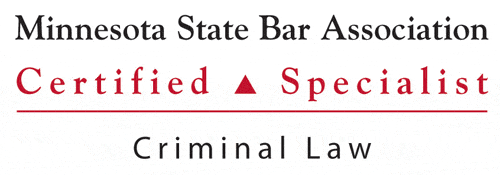
The reasons theft crimes are committed run the gamut. You may not have the things you need or want. Perhaps you don’t have the means to legally earn them nearly as quickly as taking them, and sometimes, stealing things that aren’t yours can seem like the only way out.
The problem is, theft can – and more often than not, it does – catch up with you.
When it does, it isn’t pretty.
All theft crimes are quite-serious offenses that can be punishable by major prison time. Among them, auto theft is among both the most common and the most serious offense.
So, what consequences can one face if convicted of auto theft?
Below, we share the basics about Minnesota auto theft charges, including its legal definition, different types of auto theft charges, and penalties associated with auto theft conviction.
Perhaps most importantly, we discuss defense strategies that could help your case when faced with these charges yourself.
Motor Vehicle Theft According to Minnesota Statutes
In Minnesota, auto theft is covered under a broader theft statute, which describes theft as taking the property of another.
In order to be found guilty of theft, the defendant must know (or have reason to know) that the owner did not give consent for the defendant to take the property.
Specifically, the statute prohibits taking or driving an auto without the owner’s consent.
Minnesota Auto Theft Is Always a Felony
Like most states, Minnesota punishes theft based on the value of property stolen. When property valued over $1,000 is taken, it’s a felony-level offense, almost always punishable by jail time.
Additionally, certain forms of theft in Minnesota are considered grand theft, which, regardless of the property’s value, are always a felony-level offense. Auto theft is among Minnesota’s grand thefts, hence the term grand theft auto.
One more thing: To commit auto theft the defendant need not intend to permanently deprive the owner of the vehicle. “Borrowing” a vehicle without consent is still theft.
Auto theft can land you a five-year stint and up to $10,000 in fines. You will also be held liable for any damage to the vehicle or other property that occurs while in possession of the car. When the stolen car is worth more than $5,000 or if aggravating factors are present, penalties are also enhanced.
Here are three specific types of auto theft:
Carjacking
Carjacking is defined as taking a vehicle from its owner or driver using force or the threat of force. Minnesota does not have specific statutes covering carjacking, so this offense is generally prosecuted under Minnesota’s robbery laws.

If convicted, the defendant could face ten or more years in prison. Other aggravating factors, such as the use of a deadly weapon, can further enhance this charge.
Joyriding
Joyriding is defined as taking a vehicle in the absence of the owner’s consent, but also without the intent to permanently deprive the owner of the vehicle. A classic example is a youngster who takes a car out for the evening, then returns it.
Minnesota’s auto theft laws do not require the intent to permanently deprive the owner of the vehicle, meaning that, unlike most states where it’s a lesser offense, joyriding here is
still a grand theft.
Failing to Return a Rental Car
Failing to return rental property, including rental vehicles, is prohibited under Minnesota’s theft statute, as well. Fail to show, and you could be hit with grand theft auto, even if you initially rented the car legally.
If you get into a jam, and can’t bring it back on time, an open line of communication may help you avoid an otherwise terrible surprise.
Minnesota Auto Theft Defenses
Most auto theft defenses focus on whether the defendant in fact committed the offense, or whether the defendant was somehow coerced into commission of the offense.
Depending on the exact circumstances of the alleged crime, a number of defense strategies may be available to help your case. Here are two of the most commonly used:
Lack of Proof
In order to convict the defendant of auto theft, the prosecution must prove beyond a reasonable doubt that the defendant committed the offenses.
If the prosecution does not have sufficient proof that the defendant was at the crime scene, this could be grounds for a lack of proof defense.
Entrapment or Duress
If the defendant was coerced into committing the crime by entrapment or duress, this would mean that the crime lacked the necessary element of intent.
To prove entrapment, the defense must demonstrate that the defendant was convinced to commit a crime he or she would otherwise not commit.
To prove duress, the defense must prove that the defendant committed the crime under force or threat of force from another party.

Regardless of the circumstances, auto theft is a quite-serious offense that can be punishable by many years of imprisonment. Therefore, it’s important to know the law, and proactively fight back to beat any auto theft charges against you.
About the Author:
Christopher Keyser is a Minneapolis-based criminal and DWI defense attorney known for fighting aggressively for his clients and utilizing innovative tactics to get the most positive results. He has been featured in numerous media outlets due to the breadth and depth of his knowledge, and recognized as a Minnesota Super Lawyers Rising Star (2014–2015), a Top 100 Trial Lawyer (2013–2015), and a Top 40 Under 40 Attorney (2013–2015).





